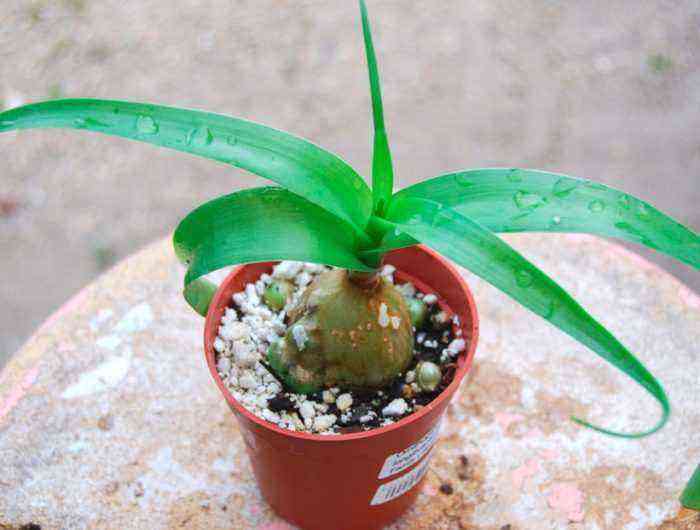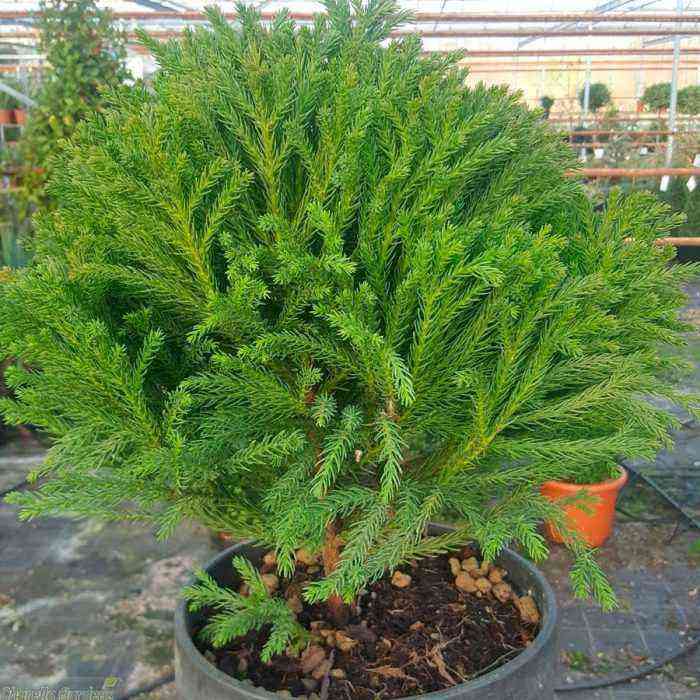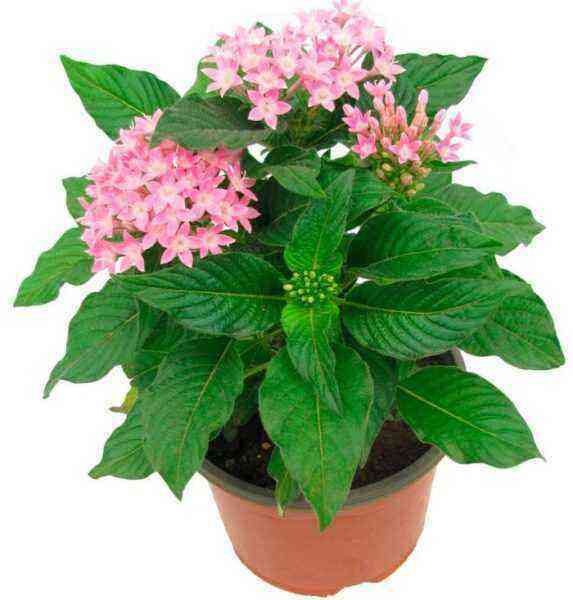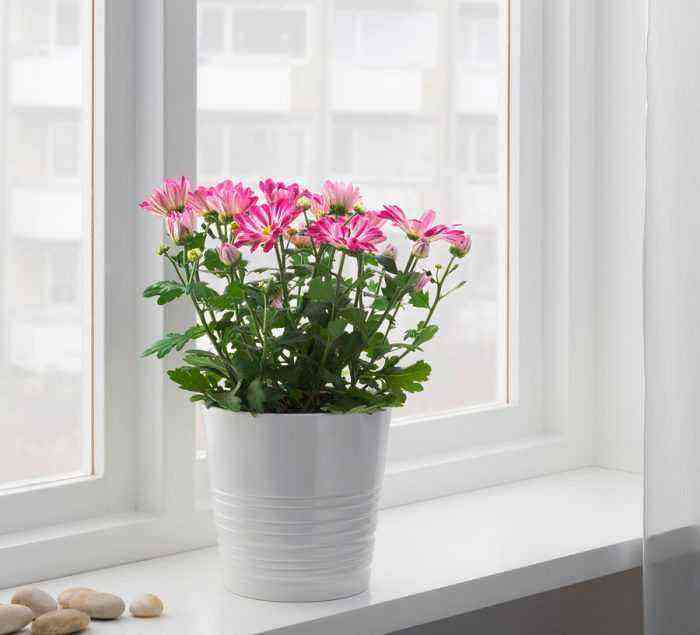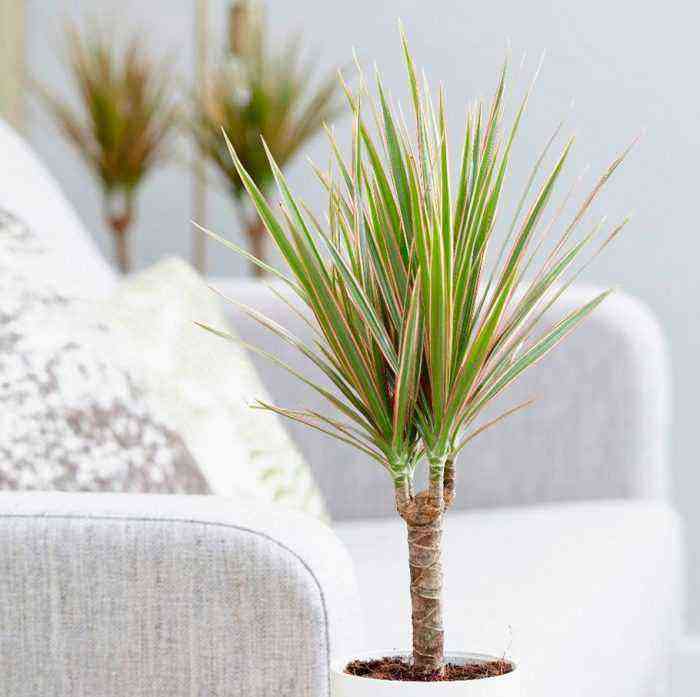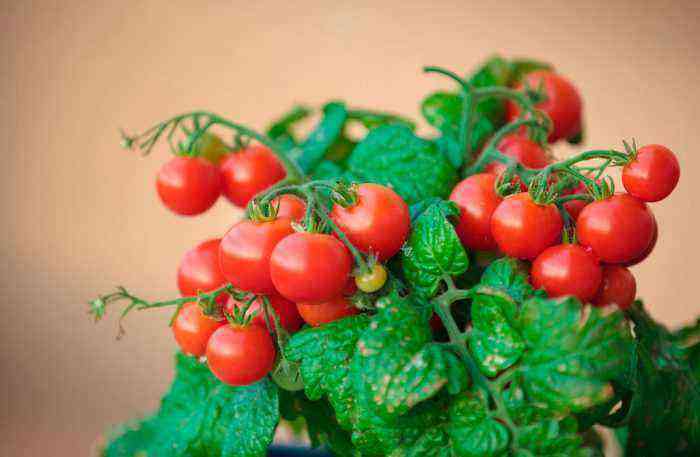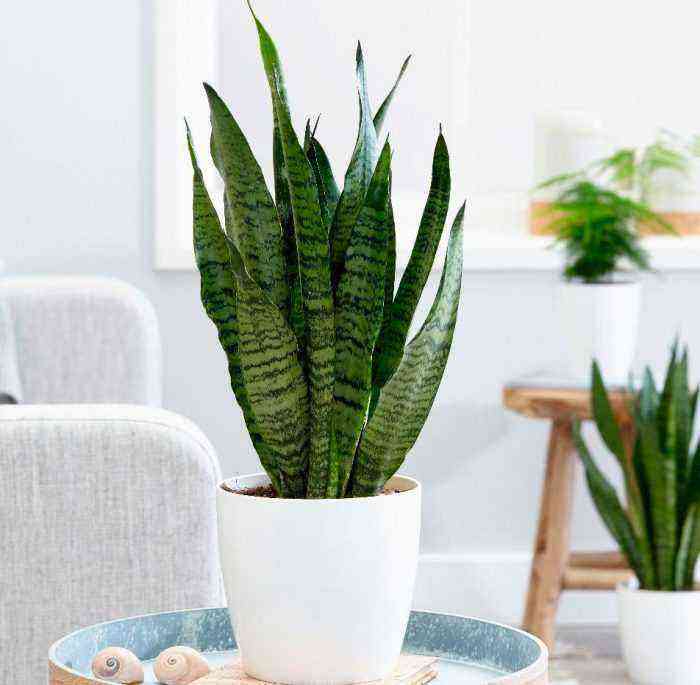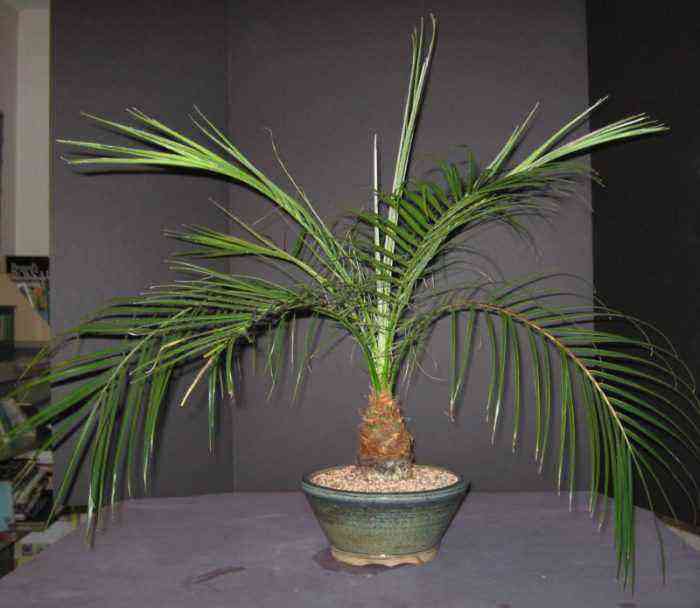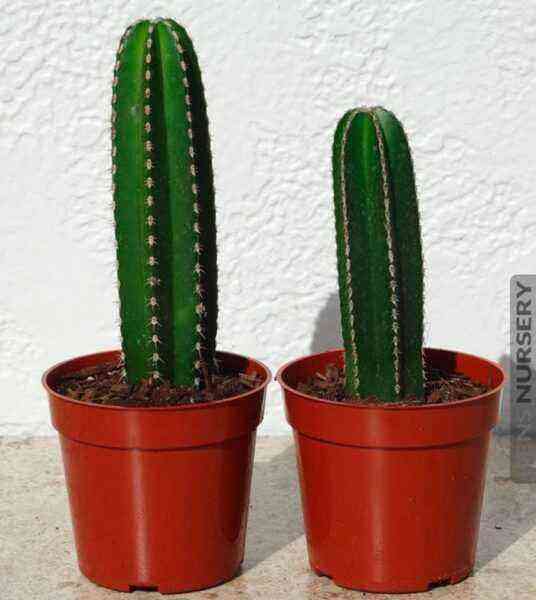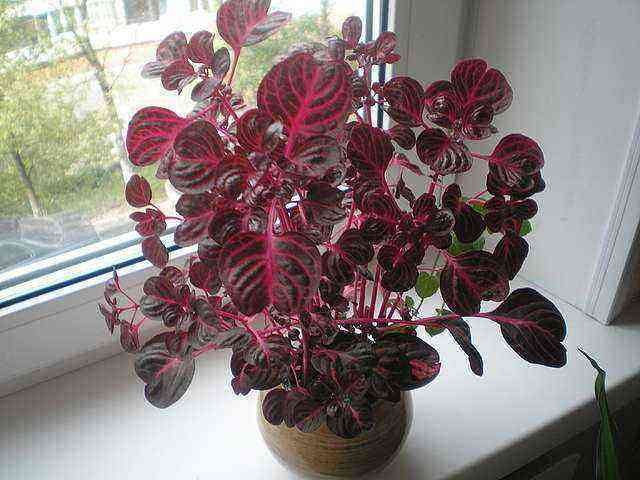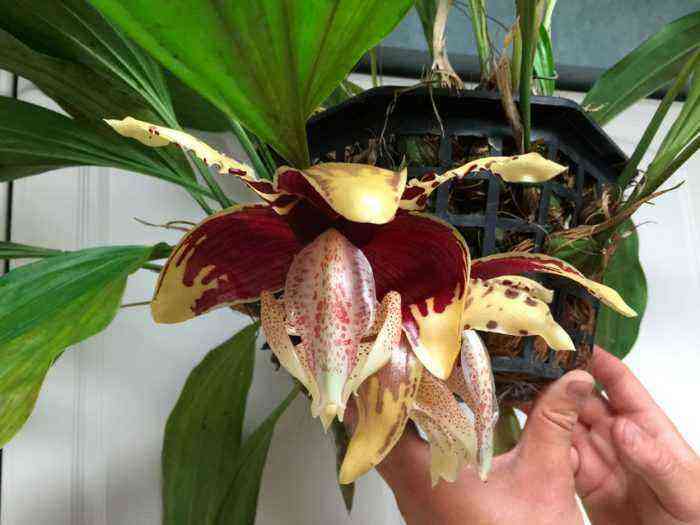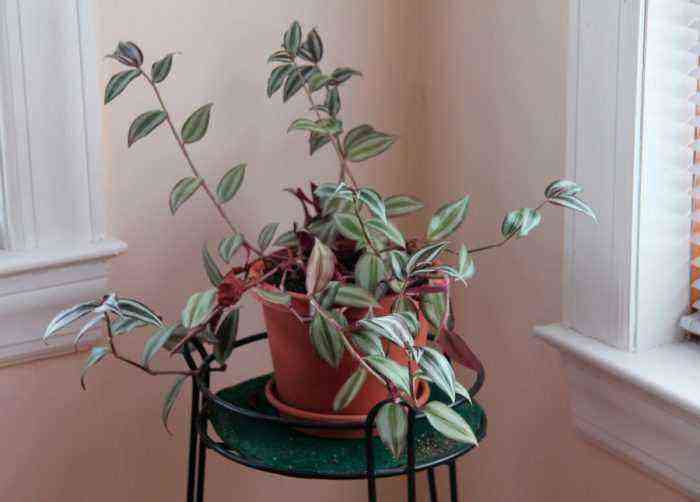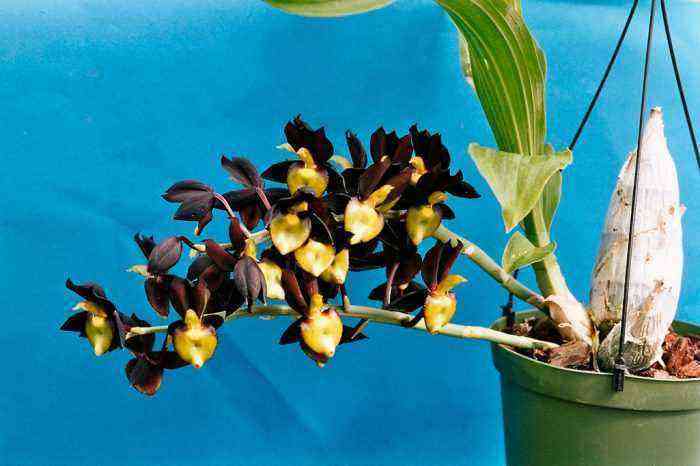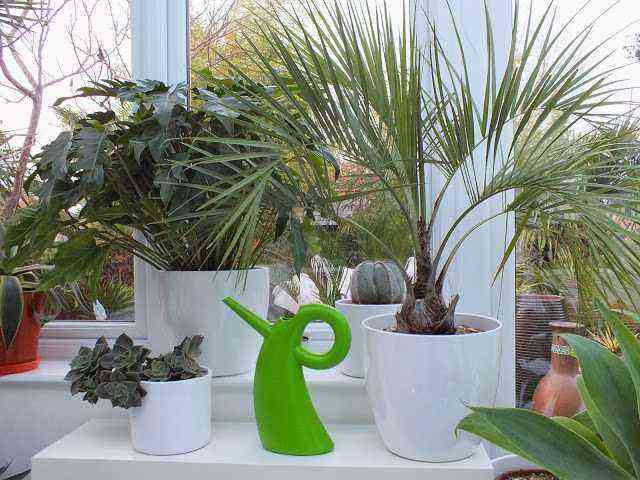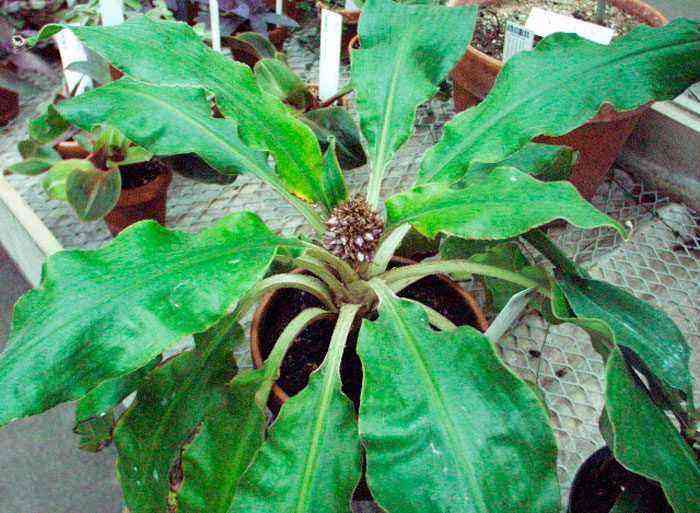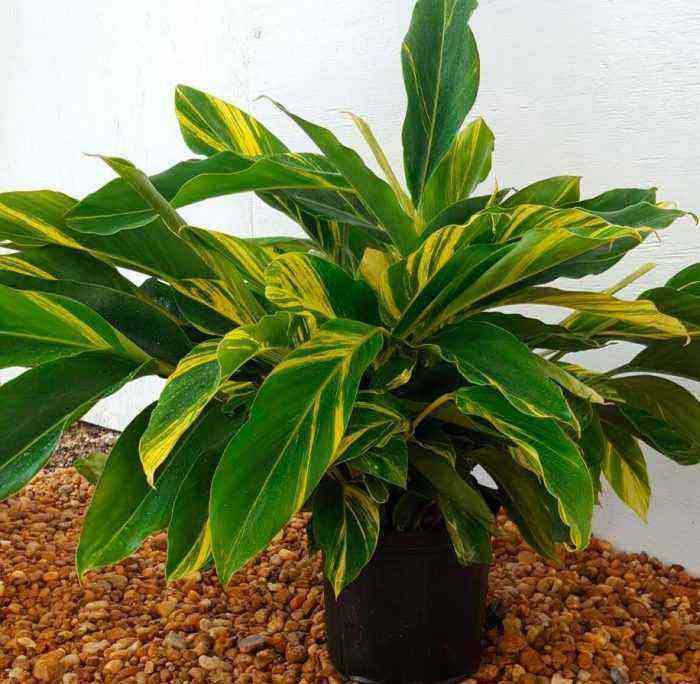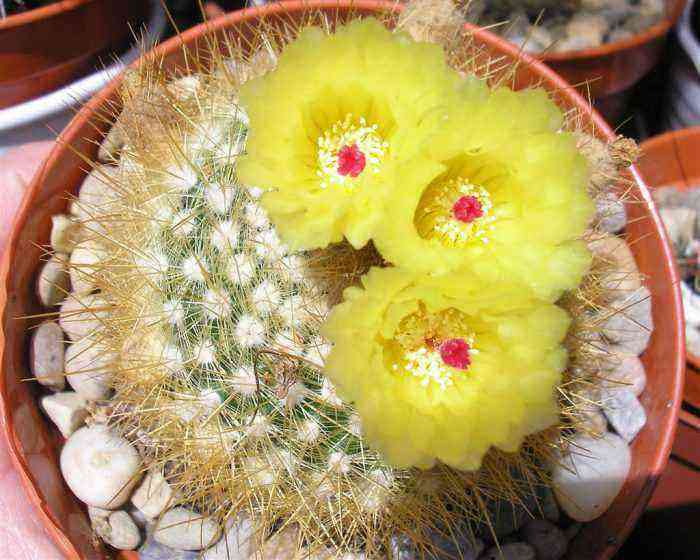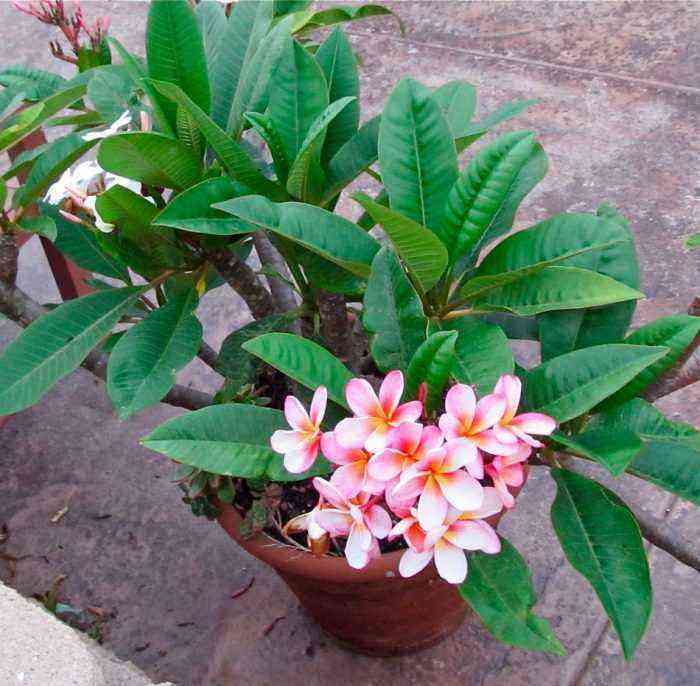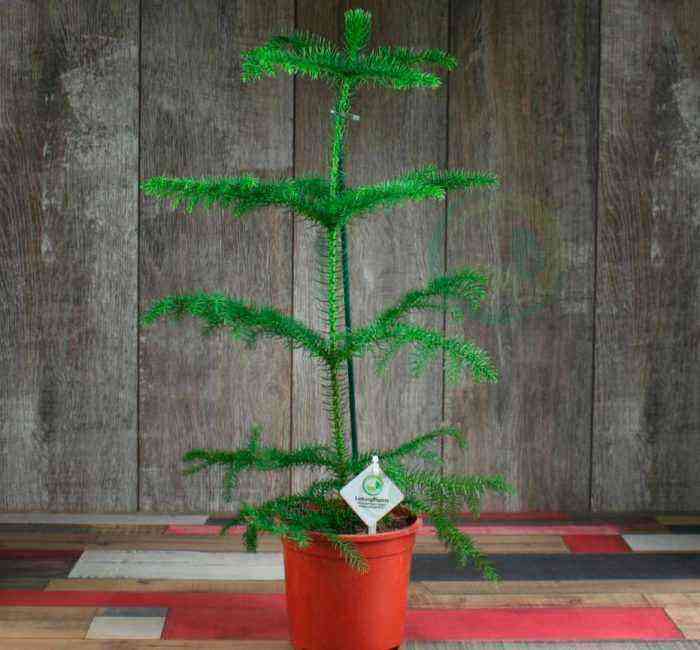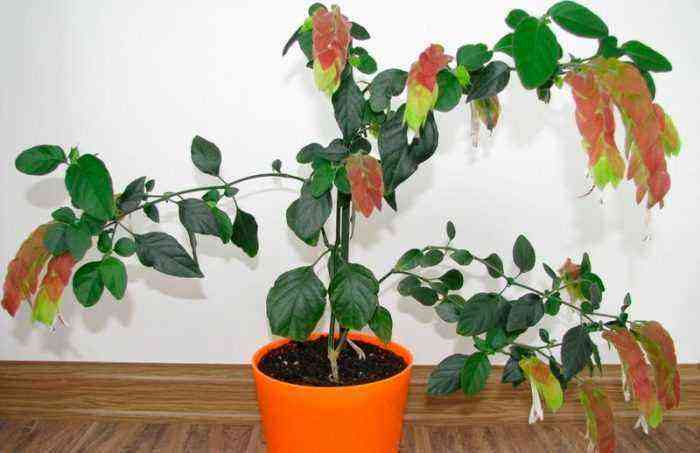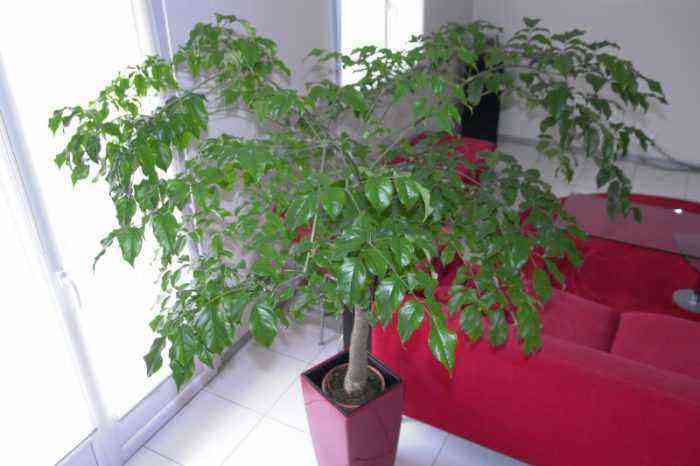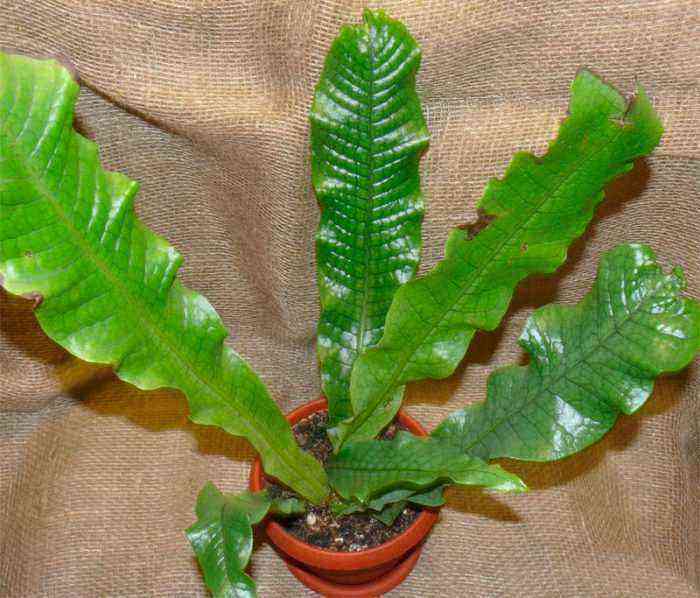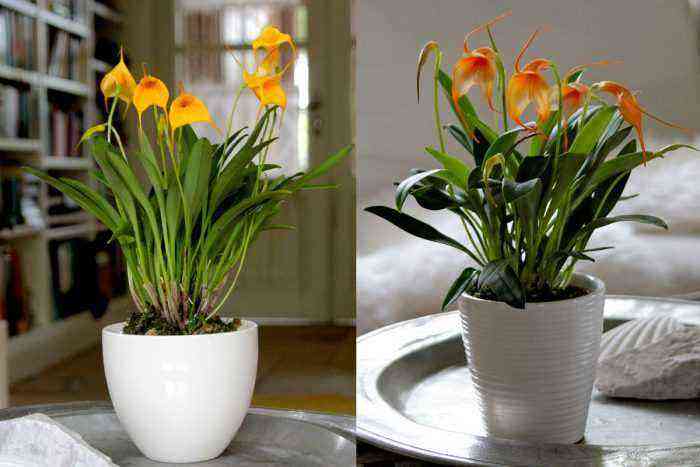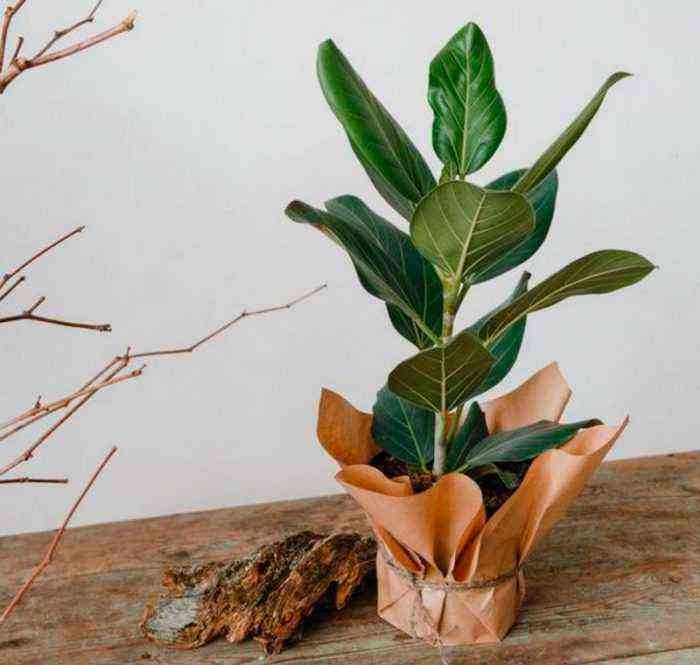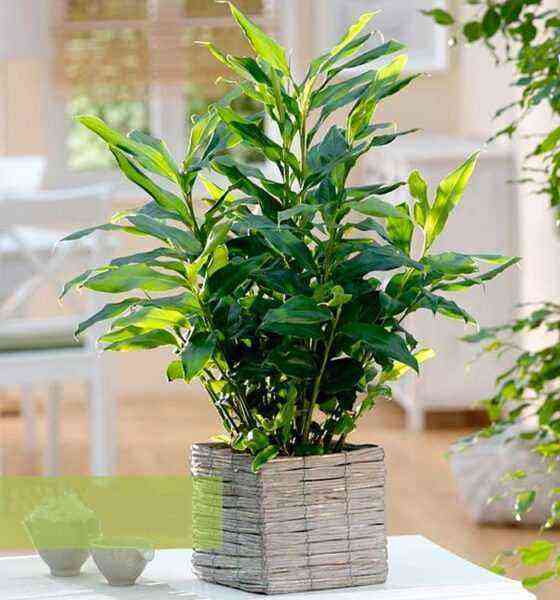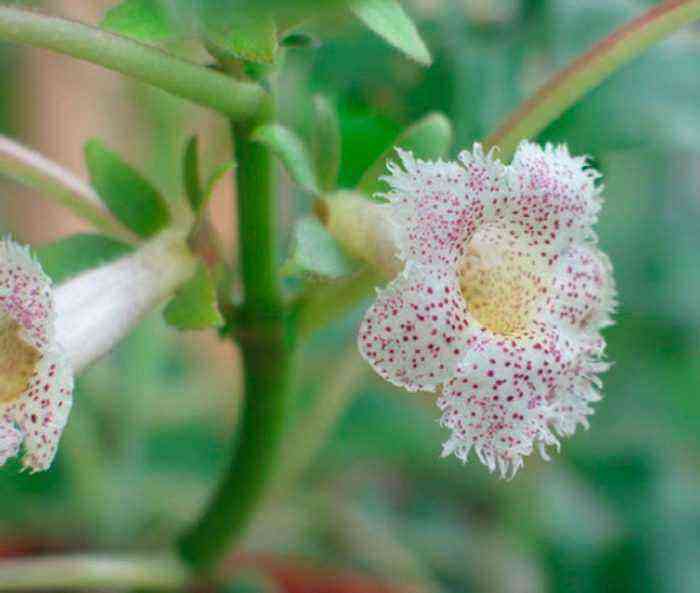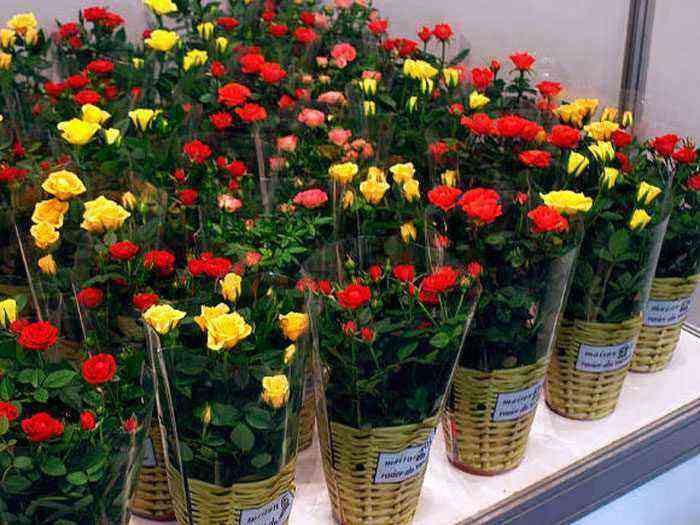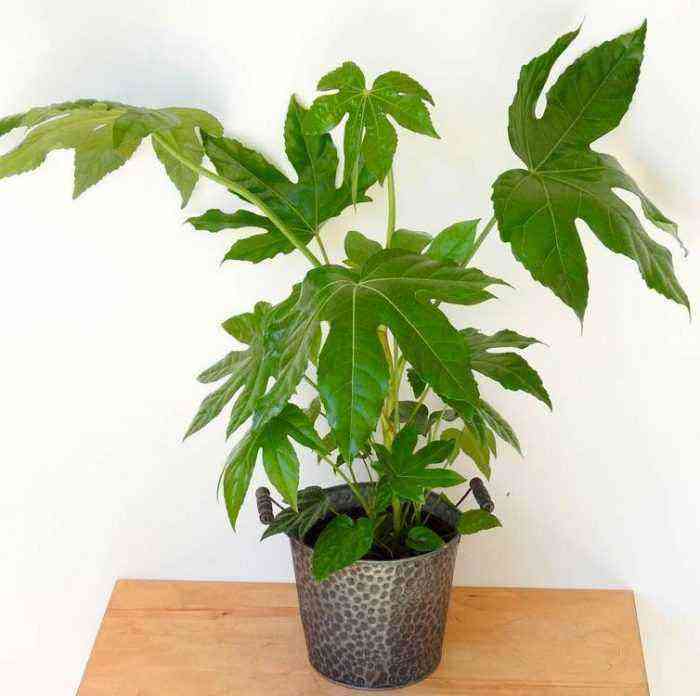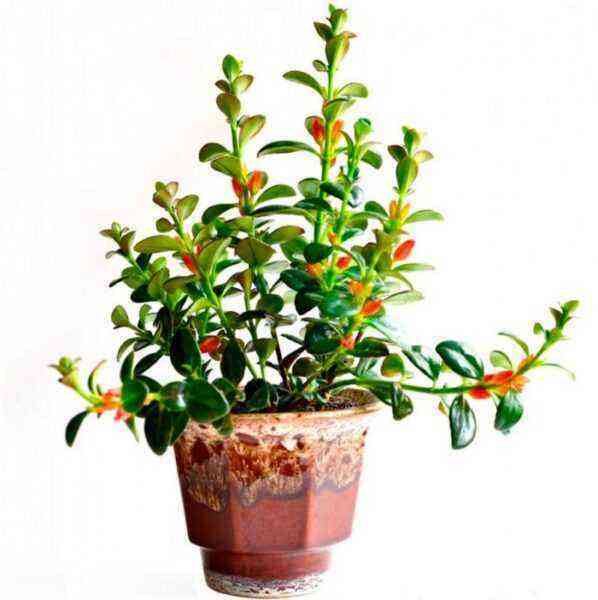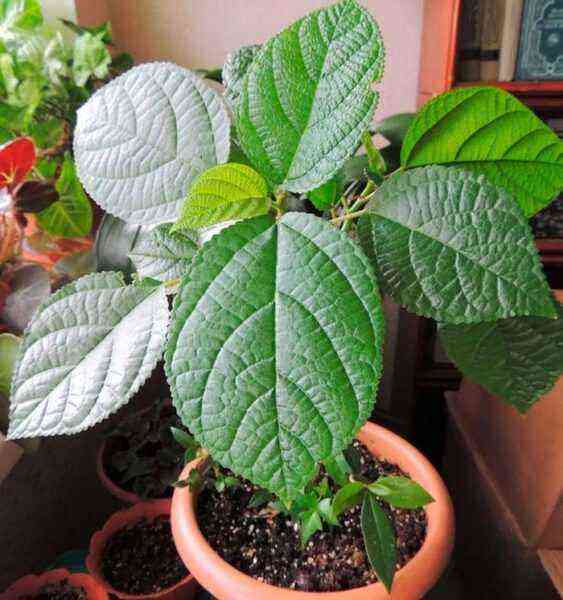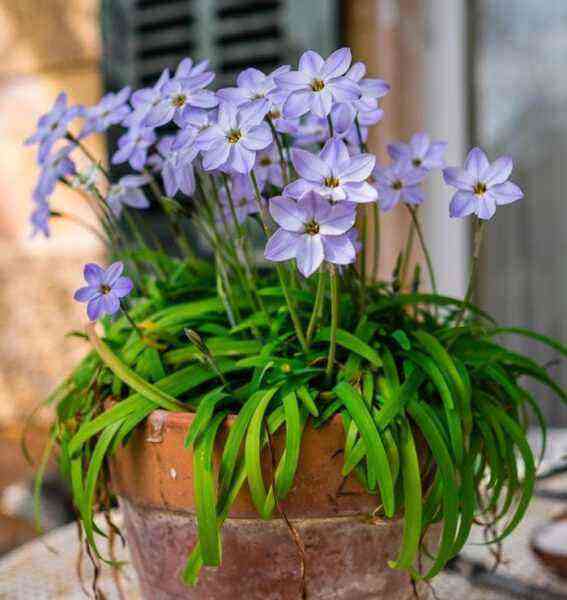The beautifully flowering Brugmansia shrub is a member of the Solanaceae family. In nature, this plant has a height of about 400-500 cm. However, at home, it usually does not exceed 200 cm. During flowering, spectacular large funnel-shaped flowers open on the bush, their length can reach 0,4 m. Flowers are both terry and simple, and two-level (depending on the variety and type).
In regions with a warm climate, brugmansia is cultivated in the open field. However, in most regions of Russia, it is grown as a room or tub culture. This plant is native to the subtropical and tropical parts of South America. Seven species of brugmansia have been found in the wild. Breeders are actively using them to develop new varieties and hybrids.
Brugmansia is characterized by an average growth rate. As a rule, flowering lasts throughout the summer. However, if you provide it with additional lighting in the evening, then the bush will delight with its flowers until winter. This perennial is of medium difficulty to grow.
Brief description of cultivation


- Temperature conditions… In summer, the air temperature should be close to room temperature, and in winter – no more than 15 degrees.
- Air humidity… It must be increased (at least 60 percent).
- Illumination… Needs a lot of bright but diffused sunlight. A south window is ideal, but the bush needs shading.
- Watering… The potting soil should be slightly damp all the time.
- Substrate… Nutritious and light, a drainage layer must be made at the bottom of the pot.
- Fertilizer… Needs regular feeding.
- Transfer… It is carried out as needed, sometimes two or three times a year.
- Reproduction… Apical cuttings and seed method.
- Trimming… Needs systematic formative pruning.
Brugmansia care at home
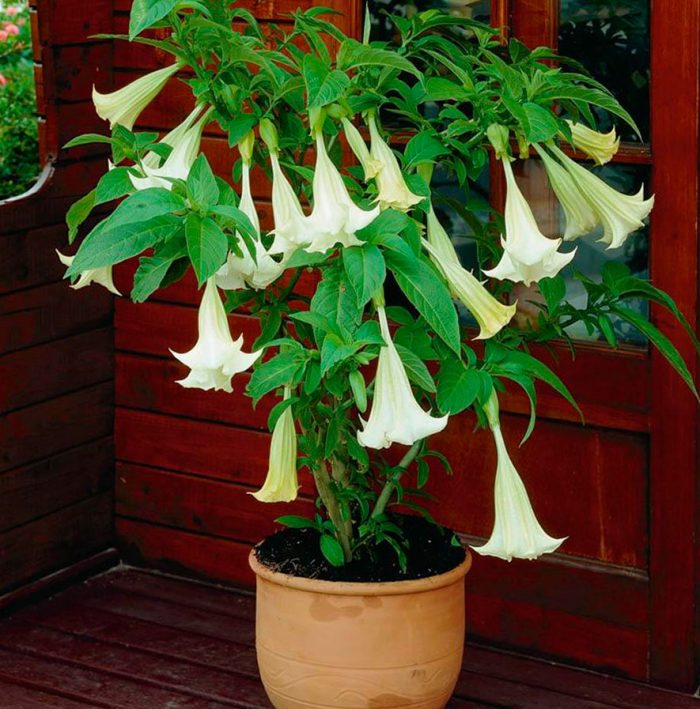

Indoor brugmansia is quite demanding to care for. She needs certain wintering conditions, as well as regular watering.
Flowering
Brugmansia flowers are shaped like long gramophone. They can be painted white, pink or yellow (depending on the species).
The life span of an individual flower is short. However, the bush blooms so luxuriantly that flowers adorn it throughout the summer. If brugmansia is provided with regular supplementary lighting, then its flowering can continue in the cold season.
Temperature conditions
In indoor conditions, such a plant feels best at an air temperature of 23-25 degrees. Do not forget to regularly ventilate the room in which the bush is located on hot summer days. If there is such an opportunity, then in the warm season it is better to transfer brugmansia to fresh air, for example, to a garden. The plant reacts positively to sudden changes in air temperature between night and day.
The bush should be provided with a cool wintering (from 10 to 15 degrees). In this case, the plant has a dormant period. If you do not have a cool place suitable for wintering Brugmans, then they provide compulsory daily supplementary lighting.
Air humidity


A plant in room conditions needs regular moistening from a spray bottle. In some cases, it is necessary to spray the bush up to several times a day. It is necessary to ensure that the humidity level in the room with the plant is at least 60 percent. For spraying, use soft and cold water.
Illumination
Indoor brugmansia needs a lot of bright sunlight. A southern window sill is perfect for her. If you put the bush on the north window, then you will have to provide it with almost constant lighting. To do this, you can use special phytolamps with a pink spectrum or fluorescent lamps.
Watering
Watering brugmansy is necessary abundantly. During active growth, it is often necessary to moisten the soil mixture in the pot up to twice a day. Make sure that the surface of the soil mixture is slightly damp all the time. After the bush blooms, its leaves begin to grow less intensively, and therefore at this time the frequency and abundance of watering should be slightly reduced.
During a cool winter, when the plant has a dormant period, it is watered as little as possible. However, make sure that the clod of earth in the pot does not dry out completely. If the bush is warm in winter, then they continue to water it in the same way as in the summer.
Pot selection
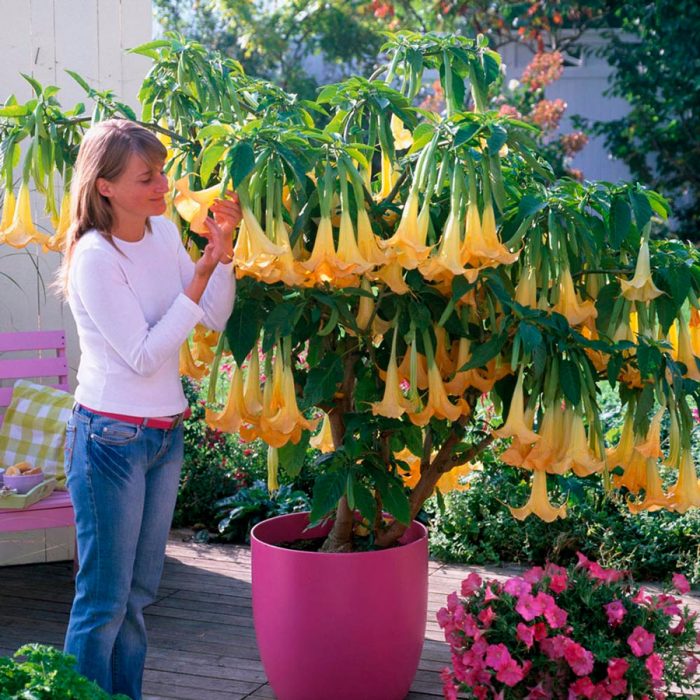

Since the plant has a powerful root system that grows rather quickly, a tall and wide pot is chosen for planting it. As soon as the roots become cramped, the brugmansia is immediately transplanted by transferring it into a new, larger container.
Substrate
For planting, a soil mixture is used, consisting of peat, perlite, leaf and sod soil, and humus (1: 1: 1: 2: 1). If desired, for planting brugmansia, you can purchase a universal soil mixture for growing seedlings in a specialized store.
Fertilizer
The plant needs regular, frequent feeding. During active growth, nitrogen-containing fertilizers are used for feeding it. During the budding period, the bush is fed with potassium-phosphorus fertilizer.
For feeding, it is recommended to use complex mineral fertilizers alternately with organic matter. Top dressing is carried out approximately once every 1 days. With a cool winter, the plant is not fed.
Transfer


Transplant the bush as needed. After the root system fills all the free space of the pot, it is required to transplant brugmansia into a larger container. As a rule, it has to be replanted at least three to four times during the year. The bush is transplanted very carefully, since its root system is very fragile. After transplantation, the culture is treated with Kornevin, which promotes root recovery.
Trimming
Brugmansia is fast growing, so it needs frequent, regular pruning. In springtime, all plant stems should be cut to about 1/3 of their length. Remember to trim in moderation. If it is overly strong, it will negatively affect the flowering, which will become less lush. The fact is that flower buds will already be laid on the stems by spring. During the summer period, part of the stepchildren is systematically cut off on the plant. Remember that if there are a lot of branches on a plant, then flowering will become more scarce because of this.
Brugmansia on the street, can I take it out on the balcony?
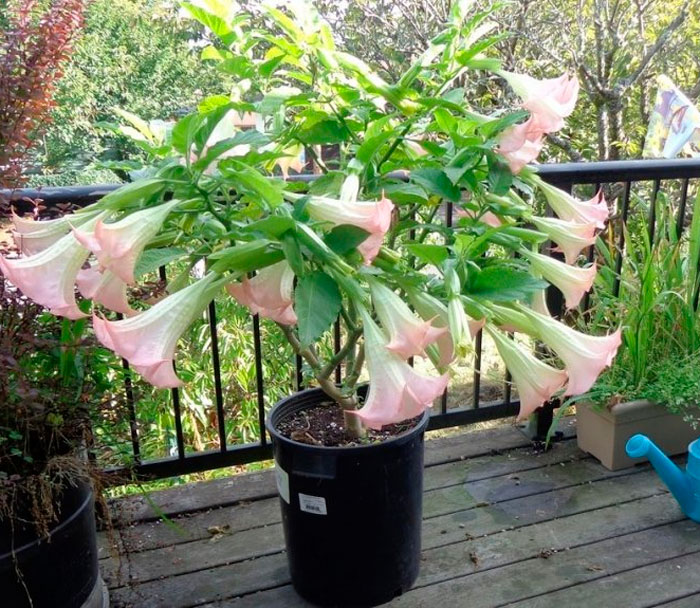

In the warm season, it is recommended to rearrange the plant on the balcony or in the garden, if possible. For him, you should choose a sunny place, while you do not need to shade it from the direct rays of the sun. In order to reduce the frequency of watering, the brugmansia pot should be dug into the ground. The differences between day and night air temperatures have a beneficial effect on the growth and development of the bush. Thanks to this, many flower buds are laid. The bush should be brought into the house before the first frosts.
Wintering
For the winter, it is recommended to put the bush in a well-lit room, while the air temperature should be no more than 10 degrees. It is watered sparsely and rarely, while the level of humidity should be high. If you do not have a suitable cool room or a glazed balcony, then it is recommended to put brugmansia on a well-lit cool window.
Moisturize the plant regularly with a spray bottle to help keep the air humid. With proper care in winter, the plant will not only feel great, but it can continue to bloom. If the room is too warm, then this can lead to flying around all the leaves or to the death of the bush.
Methods of reproduction
Cultivation from seeds
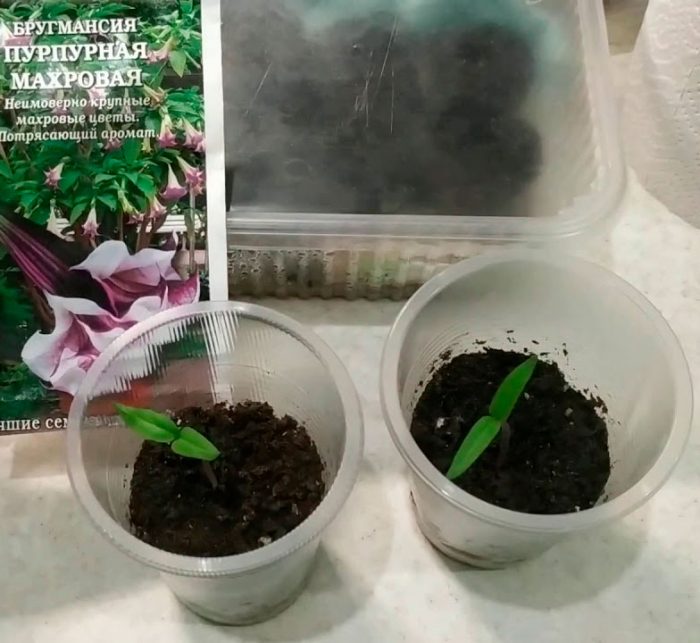

Brugmansia in indoor conditions, if desired, can be grown from seeds. But it should be remembered that seedlings are only partially able to retain the varietal characteristics of the parent plant. Sowing is carried out in a mixture of sand, peat and perlite (1: 1: 1). Seed material is deepened into it by no more than 10 mm. From above, the crops are covered with foil or glass.
After the appearance of the first seedlings, the shelter is removed. When 3 or 4 true leaf plates develop on the bushes, they will need to be cut into separate pots. There is only 1 drawback to propagation of brugmansia by seeds – it takes quite a long time. The first flowering of the bush can be seen only at two or three years of age.
Cutting


After spring pruning, there are many apical cuttings that you can try to root. Take a stalk and cut off all the largest leaf plates from it. The remaining leaves should be shortened by ½ part. Before putting the cutting on rooting, its lower part is treated in a means that stimulates the formation of roots, for example, you can use Heteroauxin or Kornevin.
Cuttings for rooting are placed in a container with water, in which one tablet of activated carbon is placed. When the roots appear on the handle, it is planted in a fertile and loose soil mixture.
Possible problems


With improper care or inappropriate growing conditions with brugmansia, the following problems can arise:
- Lack of flowering… This may be due to too much nitrogen in the substrate. Poor lighting can also be the cause.
- Pulling the stems… This is due to the fact that brugmansia is located in a too dark place.
- Yellowing and flying around young foliage… This may be due to an excess of nitrogen in the soil mixture.
- The appearance of rot… Too dense soil mixture and its abundant moisture can cause root rot.
- Flying around foliage in winter… The plant feels an acute lack of light.
- Falling foliage… Too sparse or poor watering.
- vermin… Most often, the whitefly and spider mite settle on the plant.
Types of brugmansia with a photo
At home, only a part of the brugmansia species is grown. More about them will be discussed below.
Brugmansia bloody (Brugmansia sanguinea)
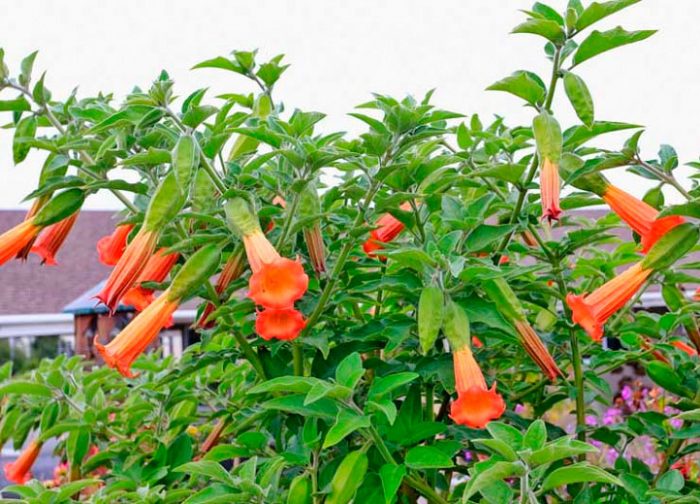

This species differs from the rest in that its odorless flowers are painted in a reddish-orange hue, while they are decorated with yellow veins. If the room is too hot for a long time (more than 25 degrees), then the bush will not bloom. In nature, the species is found in Ecuador and Chile.
Brugmansia snow-white (Brugmansia candida)
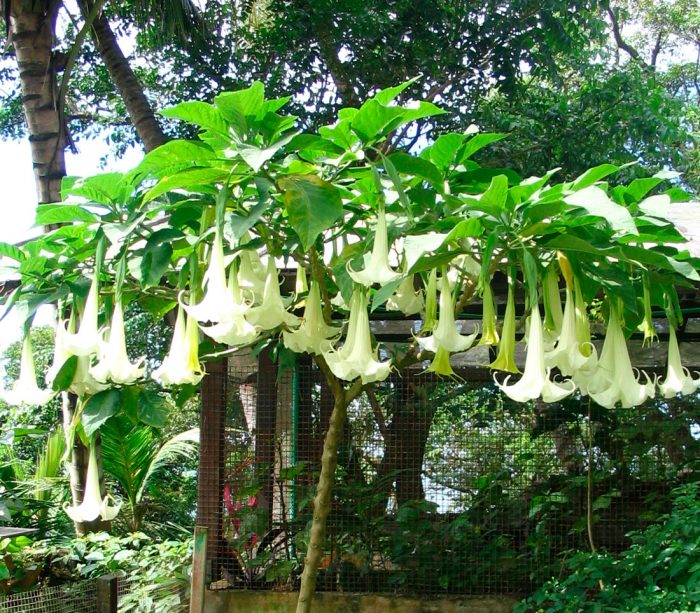

A particularly pungent smell from tubular flowers emanates in the evening. They can be painted pink, white or yellow (depending on the variety). Long-petiolate oval leaf plates have slight pubescence on the surface. The budding of a plant is observed only when the temperature drops between day and night.
Fragrant Brugmansia (Brugmansia suaveolens)


The homeland of this plant is the eastern part of Brazil. In the wild, the species is represented by small (about 5 m tall) trees. The flowers are about 30 centimeters long and can be pink or white.
Brugmansia aurea
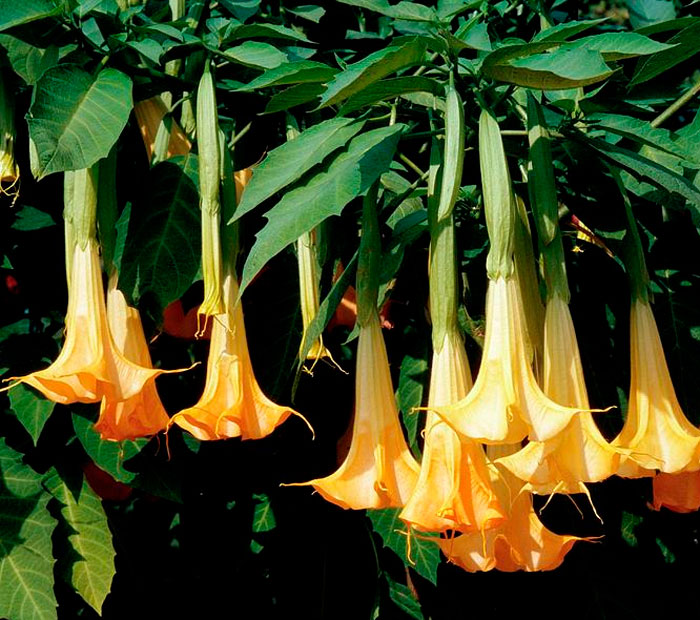

Vigorous large bushes are decorated with yellow flowers. Unlike other species, flowers have an outward bend. The native land of the species is Colombia, or rather, its northern part.
Properties of brugmansia
Where brugmansia comes from, the local population widely uses it as a medicinal plant. It has hallucinogenic properties that are used for religious purposes. Remember that each part of the plant contains a strong poison, or rather, they contain high concentrations of atropine and scopolamine. The flowers of this plant have a pungent odor, which can cause severe headaches.
